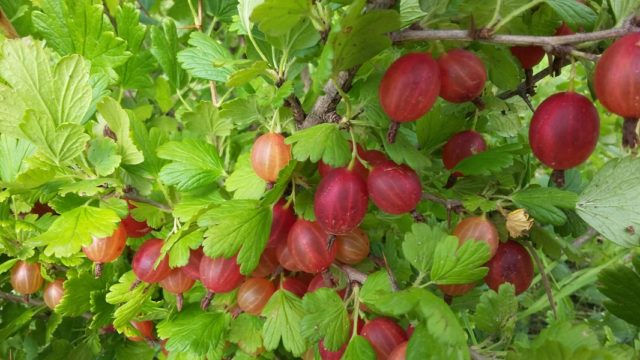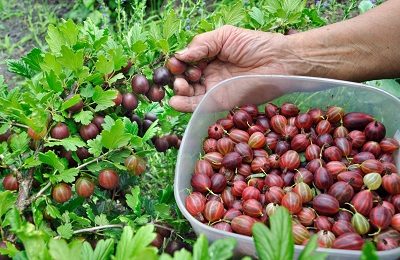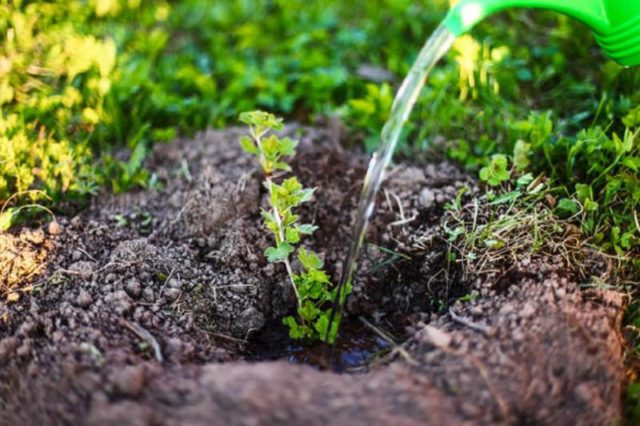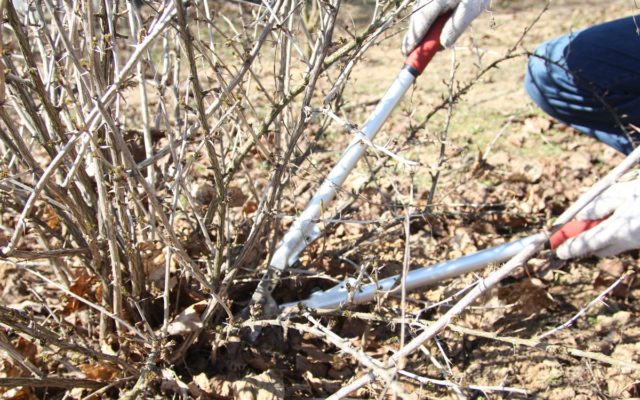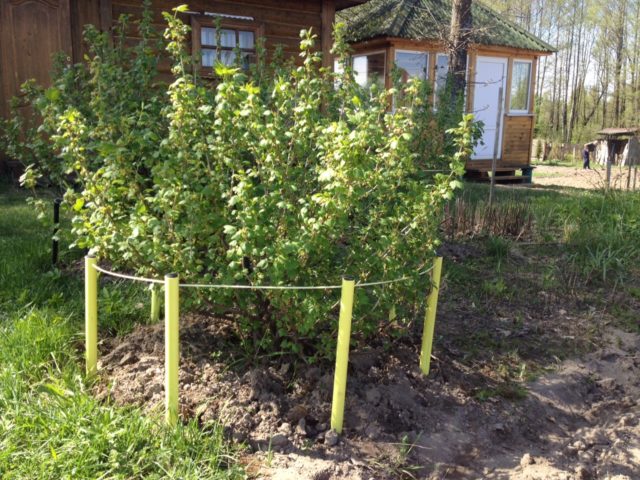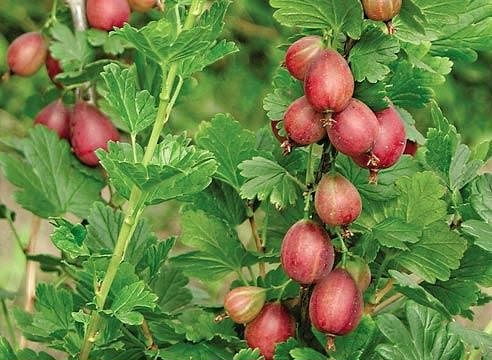Content
Gooseberries are known for their unusual flavor. The shrub usually grows in temperate areas. Breeders are engaged in work on the development of new varieties adapted to different climatic zones. Mashek gooseberries are considered one of the best varieties among berry bushes.
Description of gooseberry Mashek
The Masheka gooseberry was created by Belarusian hybridizers. In 1997, it was included in the lists of the State Register of the Russian Federation after its successful implementation in the central territory of Russia. In addition to the qualities that characterize the variety as a fruit and berry crop, it has an attractive appearance. The Masheka variety is often called decorative because of the spreading of the bushes and the structural features.
- Bush and shoots... Masheka is a medium-sized variety, the bush of which grows up to 80 cm. Thick and dense shoots are light green in color, they grow obliquely. The branching of the bush is described as average. In this case, the branches are equidistant from each other, which creates a characteristic spreading. Shoots tend to form a large number of thorns, which is taken for a lack of variety;
- Leaves... The petiole is long, located on the shoot at an acute angle, has a light green color without puffing. The leaf plates of the plant are flat, with small notches along the edges;
- Fruit... Oval, brick-red berries that turn dark brown when fully ripe. The shape of the fruit is an elongated oval. Veins appear over the entire surface of the berry. The taste of the fruit is sweet and sour.
The Masheka variety is a high-yielding, frost-resistant, self-fertile variety, which is an undoubted advantage when planting crops in small summer cottages with a limited territory.
Masheka gooseberries are planted in the central region of Russia. It can bear fruit in more rugged terrain with additional cover.
Drought resistance, winter hardiness
The gooseberry variety Masheka is not resistant to droughts. For full growth and timely formation of fruits, he needs regular watering.
At the same time, the culture shows high winter hardiness. The shrub is able to withstand temperatures down to –30 ° C, and with additional shelter it can withstand temperatures down to -35 ° C.
Fruiting, productivity
The main advantage of the Masheka variety is its high yield rates. More than 6 kg of berries are harvested from one adult bush. Fruiting occurs in mid-August, but it can shift towards the end of summer, in accordance with the characteristics of the region's climate.
The average size of a gooseberry berry is 3.5 g. Some fruits are enlarged to 5 g. The shape of the fruit is oval, their flesh is juicy, with a sweet and sour taste. Tasting assessment of the Masheka berry - 4 points. Gooseberries are suitable for making preserves, jams and fresh consumption.
Berries adhere tightly to the cuttings, not prone to shedding after ripening. With late summer ripening, they do not bake in the sun and do not crack. The skin of the berry is thin, but dense, which allows you to store and transport the fruits of the Masheka variety without loss.
Advantages and disadvantages
The Masheka gooseberry variety has characteristic features, but when choosing for planting on a site, not only the advantages, but also the disadvantages of the culture are taken into account.
pros | Minuses |
High and stable fruiting. | Active formation of root shoots, which makes maintenance difficult. |
Winter hardiness, frost resistance. | Not tolerant to high humidity. |
Self-fertility. |
|
Resistance to diseases and pests is above average. |
|
The advantage of the Masheka variety is the taste of the fruit. They have a persistent gooseberry flavor with a moderate acidity. Berries are useful for vitamin deficiencies, metabolic disorders, and are a source of natural vitamin C.
Breeding features
The Mashek gooseberry is propagated in the spring by dropping shoots, separating the cuttings or dividing the mother bush into parts in the fall. With the growth of an adult bush, dividing the root system is considered a highly effective method.
Spring digging is successful, the gooseberry takes root quickly, provided that the air humidity is at a comfortable level for the crop.
Planting and leaving
Gooseberries are planted in spring or fall. When planting in autumn, the plant is buried from August to October, so that the roots have time to adapt before frost.
- Accommodation... When choosing a location, preference is given to open sunny areas with low groundwater levels, and the absence of through winds. If you plant a shrub in lowlands with stagnant moisture, then you can lose the bush without waiting for fruiting.
- Saplings... Before planting, the planting material is examined, dried parts of the root system are removed, soaked in a biostimulator of root growth for 12 hours.
- The soil... The Masheka gooseberry does not grow on sandy soils, so the soil is fertilized with mineral-organic mixtures in advance.
For seedlings, a suitable hole is dug with dimensions of 50 by 50 cm.The distance between the bushes is from 1.5 to 2 m.
The well is filled with a nutrient mixture of organic matter and minerals by a third, then a gooseberry bush is placed with a lump of earth from a seedling plant. Then they fall asleep with prepared soil, tamp. Around the planting, a near-trunk circle is formed, which is additionally mulched.
Growing rules
After planting gooseberries, certain rules of care are established. With regular agrotechnical procedures, the Masheka variety begins to bear fruit stably in the 2nd or 3rd year of existence.
- Watering... The Masheka gooseberry loves abundant watering. The shrub is watered in spring and summer. With heavy rainfall, watering is suspended. Regular stagnation of moisture can provoke the formation of rot on the roots, therefore, the event is carried out according to a strictly established scheme, avoiding intense waterlogging;
- Pruning... The overgrowth of basal shoots, which is called a disadvantage of the Masheka variety, leads to a partial thickening of the gooseberry. Trimming is necessary. Every year, the basal shoots are cut off, leaving 3-4 of the strongest and strongest ones. In the fall, damaged branches are removed, young shoots are cut off, which will not have time to compact before the onset of frost;
- Garter... Support is needed only for young bushes that are not strong enough. As the gooseberry grows, the support is installed along the edges of the trunk circle, enclosing the bushes around the perimeter. When branching, the lower branches are laid on a nylon rope stretched between the support posts. This prevents them from ending up on the ground and makes harvesting easier;
- Top dressing... When planting, a certain amount of mineral-organic fertilizing is applied, this is enough for 3 years from the moment of planting. In the fall, the soil is fertilized with organic matter, and in the spring, ammonium nitrate is added to the soil. Foliar dressing is carried out before flowering and fruit formation;
- Rodent protection and winter preparation... A layer of mulch made from coniferous needles, spruce branches or pressed sawdust helps to protect the trunks from rodents, as well as keep them from freezing.
To protect against frost, the near-trunk circle is huddled, the branches are bent to the ground, covered with agrofibre with additional tying and pressed down with oppression.
Pests and diseases
Variety Masheka shows resistance to diseases, but with waterlogged soil and high air humidity, it can be affected by a fungus. Gooseberries begin to show symptoms of septoria or powdery mildew.
The best preventive measure when caring for gooseberries is considered to be the annual watering of the bushes with boiling water after the snow drifts have melted. To protect against pests, spring treatment with insecticides is carried out.
Conclusion
Masheka gooseberry is valued for its recognizable berry taste, high fruiting rates and attractive appearance. This variety is grown in the central part of the country, but with additional shelter, the culture bears fruit in colder regions.
Testimonials
